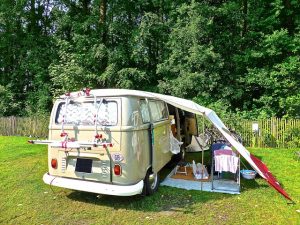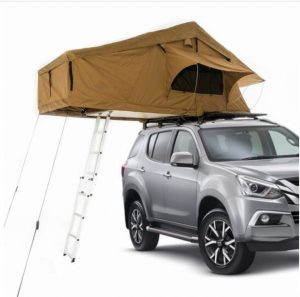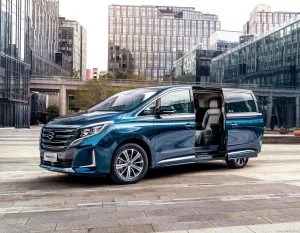People Movers
Campervan Conversions And #VanLife

It’s perfectly possible to sleep in the back of most cars in a pinch, as long as the rear seats fold flat and you have a reasonable bit of padding underneath you and a pillow (speaking from experience here). However, I wouldn’t want to do it for more than a night or so in a row without very good reason. If you like to stay in campgrounds or in the middle of nowhere but don’t want to lug around a caravan, then possibly the answer is to build your own campervan, giving you more versatile motoring as well as the ability to take secure accommodation with you – and making it easier to find a park when you stop in to pick up supplies.
If you want to convert a vehicle to a campervan, you need to start with the right one. Vans are always popular and give you more floorspace and headroom in your mobile bedroom, but it’s also possible to convert a sizeable SUV or MPV.
Good vans for converting to a campervan include:
- Mercedes Sprinter (a popular choice for many enthusiasts)
- Ford Transit
- Fiat Ducato
- Toyota Hiace
- Hyundai iLoad
- VW Crafter
- VW Kombi – the classic retro campervan!

Good SUVs and MPVs for conversion are:
- Toyota 4Runner
- Toyota Estima
- Honda CRV
- Honda Odyssey
- Skoda Octavia
In fact, any decent-sized SUV or van or MPV can be converted into a campervan. Even some utes with a covered deck can be used as campervans. Some can even be converted into full legal motorhomes, as long as you meet the standards.
The simplest way to convert your vehicle into a campervan is simply to fold down the back seats, then toss in a mattress, a butane stove and some picnic plates, and you’re good to go. You may also be able to even remove the rear seats completely, although whether you can do and have a legally roadworthy vehicle will depend on which state you’re in.
Assuming that you can remove the rear seats permanently (or at least until your holiday’s over), then you can go one step further and build a bed platform, which will avoid the problem of weird niggly bumps under the mattress that will make you realize where that folk tale of the Princess and the Pea came from. The advantage of a bed platform is that you can store stuff under it (like your clothes and your cooking gear).
If you want more than a place to sleep and a place to stash clothes and food, then you can add all sorts of things. LED fairy lights and rechargeable batteries have made lighting a lot easier than it was when I was in my 20s, so don’t worry about installing fancy lights unless you’re super-keen. The upgrade that a lot of people like to go for is a loo of some sort; in fact, if you’re a New Zealander reading this, you have to have some sort of loo on board to get certification as a freedom camper. I’d add curtains as one upgrade, as cars and vans are usually built for visibility, which means that when you’re trying to sleep or get dressed inside the van, you’re still exposed to the outside world. Even if you are in the middle of nowhere and get changed in the dark, the light of the rising moon can still wake you up in the wee smalls (although an eye mask or a beanie pulled over your eyes can do the trick).
Ultimately, exactly what you want to put into your vehicle to convert it to a campervan will depend on what you want to do with it and how long you’re going to be doing it for. If you are currently without a permanent home and living the van life, like one of my nieces did, then something larger will make your life more comfortable. The big thing to remember, as with any DIY project, is to measure first and play around with squared paper (or a computer-aided design tool if you know how to use one) before you head down to Bunnings and start cutting up the timber.
To be legally classed as a motorhome in Australia, the vehicle has to be fitted with seats and a table, which need to be fixed (although fold-down tables are legit); storage (fixed), somewhere to cook (also fixed) and somewhere to sleep, which also – you guessed it – needs to be fixed. It also needs good ventilation and a fire extinguisher, and you need to stick with the weight restrictions for the class of vehicle. If you want to add anything fancy involving electricity, water or LPG gas, then this needs to be professionally installed and certified for your own safety as well as to meet the requirements. You can read the full requirements here.
You can also take the easy option and simply add a rooftop camper to a ute or 4×4, which takes out a lot of the hassle of cutting, measuring and shocking the neighbours by what you say after hitting your thumb.

Destination Freedom and Vehicles for the Physically Challenged

There are many wonderful people with some sort of physical disability that they’ve had since birth or from an incident later in life which caused the disability to come about. All are inspirational people.
Being allowed to drive when you are physically challenged offers you so much more independence and heaps more confidence. Driving offers a sense of freedom to do what you want whenever you can, so it gives you more opportunity to find a job and get to work, volunteer for others, and go to the other side of the continent solo, or with family and friends, when you want to just as you see fit.
Being physically challenged is on its own a significant hurdle to overcome on all fronts when it comes to being able to do life like a person with a fully functional body. There are many difficulties for a physically challenged person to deal with, and one of those is simply getting from Place A to Place B on time.
If you were/are a person with a physical disability who wants to be able to drive to your own Destination Freedom, then finding and owning the right vehicle that’s just right for you will be the first box to tick. Sometimes the vehicle may need to be modified to suit your own unique requirements. My Uncle Frank, a 2nd World War veteran who has since passed on, suffered a war injury from flying shrapnel. This brief fateful moment caused Uncle Frank to become paralysed in his left arm as well as partially in his left leg. He was still able to walk with a shuffle, drive a car (an always-shiny brown Toyota Corona) with an automatic gearbox, and give everyone a good laugh with his great sense of humour. A small bracket with a fixed swivelling knob was attached to the steering wheel of the car so that he could turn the car with ease, using his good hand and arm to steer.
Many other people have had accidents that even left them a paraplegic and confined to a wheelchair for mobility. Any accident can be life changing, none more so than a spinal cord injury. Yet still it is possible for these people to drive. A former New Zealand equestrian champion, Catriona Williams, who is now a tetraplegic after falling from her horse in 2002, still enjoys an independent life filled with fun. Enjoying adventurous road trips with family and friends is made possible with her modified Volkswagen Caravelle van, which has been set up for her to be able to drive securely from her wheelchair.
There are clever people who have the engineering skills enabling them to modify a vehicle for many people with physical challenges.
Some of the special equipment you can use to modify a vehicle include:
- Infrared remote control systems that enable easy access and operation of a vehicle from a wheelchair.
- Controllers for wheelchair movement (i.e. ‘Slip and Puff’ systems via sucking and blowing through a straw-like device.).
- Headrest indicators the indicators are activated by head movement on the head rest.
- Mini steering wheels that enable people with limited upper body strength to steer the car with ease.
- Joystick or foot steering, which can be combined for steering, acceleration, and braking.
- An array of hoists and roof racks for various reasons.
- Seatbelt modifications, harnesses, and special seating.
- A left foot accelerator pedal instead of a right foot one.
- Various hand controls that can of themselves incorporate up to seven unique functions – i.e., steering, high beam lights, horn, wipers, indicators etc.
These are just some of the possibilities. Pretty much any car can be modified, new or old. MPVs and vans are ideal for a person who is looking to drive the vehicle from their wheelchair. It’s awesome there are great opportunities out there for enhancing quality of life.
Becoming Greener, Saving Money, and Other Ways to Get About

It’s always a prudent idea to have a little bit of cash tucked away for a rainy day. As much as we like to drive, there are some other ways of getting to work or the shops, especially if you’re one who lives in a city or town, which will probably be most of us.
“I wish I had a little more cash in the bank!” is a phrase that’s been around since Noah, and I guess he too might have looked at getting a higher paid job to cope with the rising costs of timber, building materials, fuel, and other important goods and services. For some of us, the reality is that our current job is pretty good, anyway. So, what are some things we can do when we feel we need to be saving a little more money for other things (e.g., that weekend away to Fiji or paying for that school sports trip to NZ that one of the kids has to go on)?
Getting from A to B every day of the week does draw down on any spare cash, and once you’ve made the switch to a smaller car, a hybrid or – lucky for some – even a new EV, you are left scratching around for other options to cut costs. Is there anything else that can be done then to reduce our fuel, EV power bill, and our carbon footprint?
On sunny days – and we have a few of those in Australia – why not take the bike instead of taking the car? If your work premises is under 30 minutes away by bike, then cycling is a great way to keep yourself fit, also ensuring that the times when you do dust off the car to take it out for a spin become even more fun and rewarding.
Using your car less and biking or walking more is going to be good for keeping your body in shape. Now that’s a great incentive if you’re on the lookout for someone special or even if just maintaining the special relationship you do have. How cool is that, maintaining your sexiness and letting more cash build up in the bank for that holiday away or “Johnny’s or Jenny’s” school sports trip. Of course, if you have to take half a dozen kids to school, take a load of gear or a trailer, or if it’s simply pouring with rain, then you’re probably going to want to stick with your car for transport. However, shorter distances can also be walked – even with a brolly in the pouring rain!

Governments, town planners, and urban designers are all trying making it easier for cyclists to be able to bike safely, pedestrians to go walk about, all while working towards cleaning up the air quality of our urban environments – particularly the congested city environment. I do love a ride on the pushbike. The wind in the hair, the sun on the back, and the blood pumping through the veins feels great.
But what about the bus or train? Does your public transport system provide a better alternative to your vehicle’s thirsty internal combustion engine? If you can find a public transport route that takes you within half a kilometre of your work, why not use public transport and walk the remainder? You’ll get to stretch your legs before arriving at your office, and this will help your work productivity – especially first thing in the morning. Buses are usually comfortable enough in Australia, while the train is also available in many of our main centres.
I guess if it’s time for getting the groceries, the bus or train might not be a practical option; it is hard work carrying all those shopping bags full of milk and eggs. The grocery run is definitely easier to do by car. Doing the groceries weekly or even fortnightly rather than less frequently saves you petrol money and also grocery money – it’s a fact! Flip the coin, and I suppose lots of little shopping trips everyday by bus or train could also get the groceries done.
But is everyday shopping practical or relaxing? Maybe not for busy Mums and Dads, or workaholics, but it is probably more attractive for older people who haven’t quite the same work and family commitments.
Of course, there will be a number of you smirking as you read this because your work office is at home. Yes, I agree, that’s a pretty cool set up! Rolling out of bed in the morning and into your office chair sounds like a great way to get to work. Still, there are ways, I’m sure, that you could reduce the level of car trips you do in a week, especially if you needed to save a few extra dollars for various reasons.

Still not convinced that you can give up the car entirely? Actually, it is pretty hard in this day and age to go carless. All of us need to be able to get out of town and see the countryside from time to time – it’s healthy and the Doctors would agree! However, there is another phenomenon known as carpooling. You could carpool with the people at your work. Single-occupant vehicles (i.e., one person in one car) are frowned on by town planners, environmentalists, and traffic engineers, so if you can share the ride with someone else via a carpool system, you will be impressing these types. You will also get to save money, and you can relax a little, feeling a bit better about how you’re helping to reduce traffic congestion, your own carbon footprint, and the urban air pollution.
Of course, if you love cars, then you are going to want to drive yourself everywhere. Best save up and buy a hybrid or EV, then!

It’s School Run Time Again!
Well, the start of another school year is upon us, which means that the roads at certain times of the day are going to be super-busy as mums and dads do the school run. If your child is starting school for the first time or if he/she is going to a new school that’s beyond walking distance, you might be wondering about doing the school run for the first time. What do you need to know? And how do you get your car ready for the school run?

First of all, figure out whether you want to be part of a car pool scheme or whether you’re only going to pick up and drop off your own kids. This depends on a number of factors, including how large your family is and where all the other families involved in the car pool scheme live. It also depends on how large your family vehicle is. If what’s handy for the school run is a smaller two-door hatchback that requires passengers to do a fair bit of clambering in order to be squished in the back seat, then you may not be all that popular. However, if you have a minivan or MPV handy, then you’re probably the obvious choice for doing the school run.
If you choose to go down the car pool route, then sit down and negotiate everything with the others involved in the scheme. What happens when someone is ill or has an unexpected meeting at an awkward time? If someone has to do the lion’s share of the driving (that person with the seven-seater, for example), how will they be compensated for the extra fuel (or power) costs? Will the car pool only be for the mornings, or will it be for afternoons as well – and what happens when one (or more) of the kids has after-school sports or drama or something along those lines? Carpooling, while good in theory, might not work for everybody in all situations.
Getting The Car Ready
Here, we’ll assume that your situation is like mine: two kids and no nearby families, so you’re doing the school run on your own. Do you need to do anything to get your car ready specifically for the school run?
Your car will already be set up in many ways for carrying your own kids (booster seats, for example) but there may be a few more things that you need to think about. For example, will you carry school bags in the boot or in the car cabin? What happens if someone has to carry an extra-big delicate school project – where will that go? How will you make sure that the inevitable paper notices that kids come out of school clutching at the end of the school day don’t get lost in all the other bits that creep into a car’s cabin over time (we’ve all been there!). If you have some sort of system, the chances that an important notice will get lost in the seat-back storage pocket or in the footwell will be minimised.
Other things you might want to get ready include:
- Having USB chargers ready to go in case someone needs to charge their phone, tablet or laptop – especially if they have only just realised that the laptop has low battery and they’re going to be the first person to present a speech when they get to school.
- Snacks for after school. Kids are often hungry after a busy day, and this can make them grumpy and whiny, especially if you end up getting stuck in a traffic jam. Dried fruit, nuts, rice crackers and bliss balls are all easy to store in the glove box to restore flagging blood sugar levels while still being reasonably healthy.
- An umbrella. Weather can be fickle, and if you opt to park further down the road then walk to meet your kids at the school gate, there will inevitably be a day when you didn’t think it was going to rain but…
Cleaning your car before the school year begins is your choice, although I’d recommend giving the inside a good vacuum just to give it that fresh, new feeling that you always get at the start of a new school year. If your kids are old enough to be embarrassed by a dirty car exterior, or if they’re old enough to find writing “Clean Me” messages in the dust funny, they’re old enough to be made to wash the car themselves. You could make going to the car wash a bit of a weekly ritual – perhaps at the end of the week.
School Run Etiquette
When you do the school run, it’s important to be courteous and considerate of other parents and other children. Don’t go all Mama Bear, ready to run roughshod all over other people in order to get your kids. Every other parent is as stressed and protective as you are. What’s more, congestion and visibility are real hazards around school gates at the busy times of day. To ensure that everybody stays safe, follow the etiquette rules:
- Don’t double-park, park in bus stops or park in No Parking zones. Parking a little way down the road and having a short walk won’t do you or your kids any harm.
- Keep your speed down, no matter how busy or rushed for time you are.
- Respect zebra crossings – that’s a no brainer.
- Don’t honk your horn to get your child’s attention.
- Avoid getting into silly status games with other parents involving fashion, achievements and vehicle type.
- Respect rules such as the time limit in the “kiss and run” zones.
- Model the sort of patience that you would expect your kids to demonstrate, especially regarding places in the queue, waiting your turn and so forth.
- If someone else breaks these rules, refrain from shouting corrections and comments out the window. You don’t want to be a Karen.

An MPV – Great for School Runs!